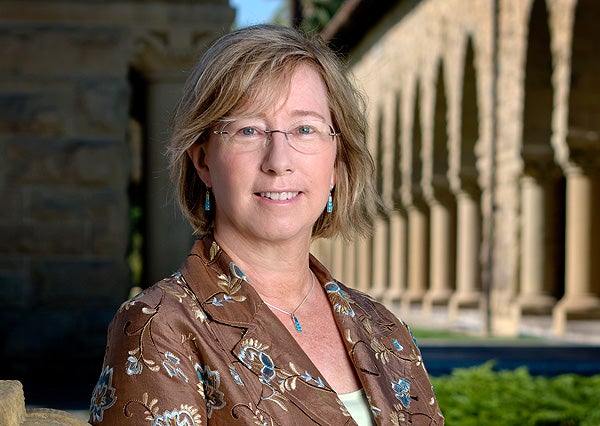|
May 26, 2011
New research projects for Stanford's Global Climate and Energy Project, and room for more sponsors

Sally Benson, director of Stanford's Global Climate and Energy Project (Photo: Steve Gladfelter / VAS Stanford University) Stanford's Global Climate and Energy Project (GCEP) has opened the door for more companies to join the project through a revised contract with its current corporate sponsors.
"This agreement provides the opportunity for new sponsors to step in and become part of GCEP's pioneering research programs," said GCEP Director Sally Benson. "It also enhances our ability to fund high-risk, high-rewards research efforts that could have a tremendous impact in the energy arena."
The updated contract allows GCEP to co-fund research with the government, further leveraging innovative ideas developed by the project’s investigators.
GCEP is a collaboration of academic and industrial scientists sponsored by ExxonMobil, GE, Schlumberger and Toyota. Its purpose is to conduct fundamental, pre-commercial research and create technology to reduce greenhouse gas emissions.
Funding for new research
GCEP, which launched nine years ago, has supported 80 research programs with more than $100 million. Nearly $4 million in new grants was recently awarded for three efforts led by Stanford faculty in the areas of solar energy, carbon storage and biomass energy.
In one of the new programs, Associate Professor Michael McGehee and Consulting Professor Alan Sellinger from the Department of Materials Science and Engineering are designing a new family of advanced electron-accepting materials to be used in organic photovoltaic cells. Their research could lead to cells with longer lifetimes, greater efficiencies and lower costs, making organic photovoltaic cells a more viable option to harvest solar energy.
Assistant Professor Kate Maher and Professors Dennis Bird and Gordon Brown from the Department of Geological and Environmental Sciences are examining the reactivity of carbon dioxide with rocks and fluids during and after injections of the gas into the ground. They are investigating carbon sequestration in a range of environments, including deep saline aquifers and magnesium-silicate rocks, in order to keep the heat-trapping element out of the atmosphere.
"This GCEP funding allows us to improve our ability to determine what chemical and physical processes could lead to the safe and permanent storage of carbon dioxide underground," Maher said.
Professor Alfred Spormann, from the departments of Chemical Engineering and Civil and Environmental Engineering, is conducting innovative research that could enable biofuel production directly from electricity. His goal is to achieve microbial carbon dioxide fixation and biofuel production at cathodes in modified fuel cells. If successful, this technology would be compatible with the current transportation infrastructure.
"We are confident that the added flexibility of the updated GCEP agreement, along with these new innovative solar, carbon storage and biomass efforts, will continue to keep GCEP at the cutting edge of energy research," said Gary Leonard, chair of the GCEP management committee and global technology leader for energy and propulsion at GE.
-30-
|